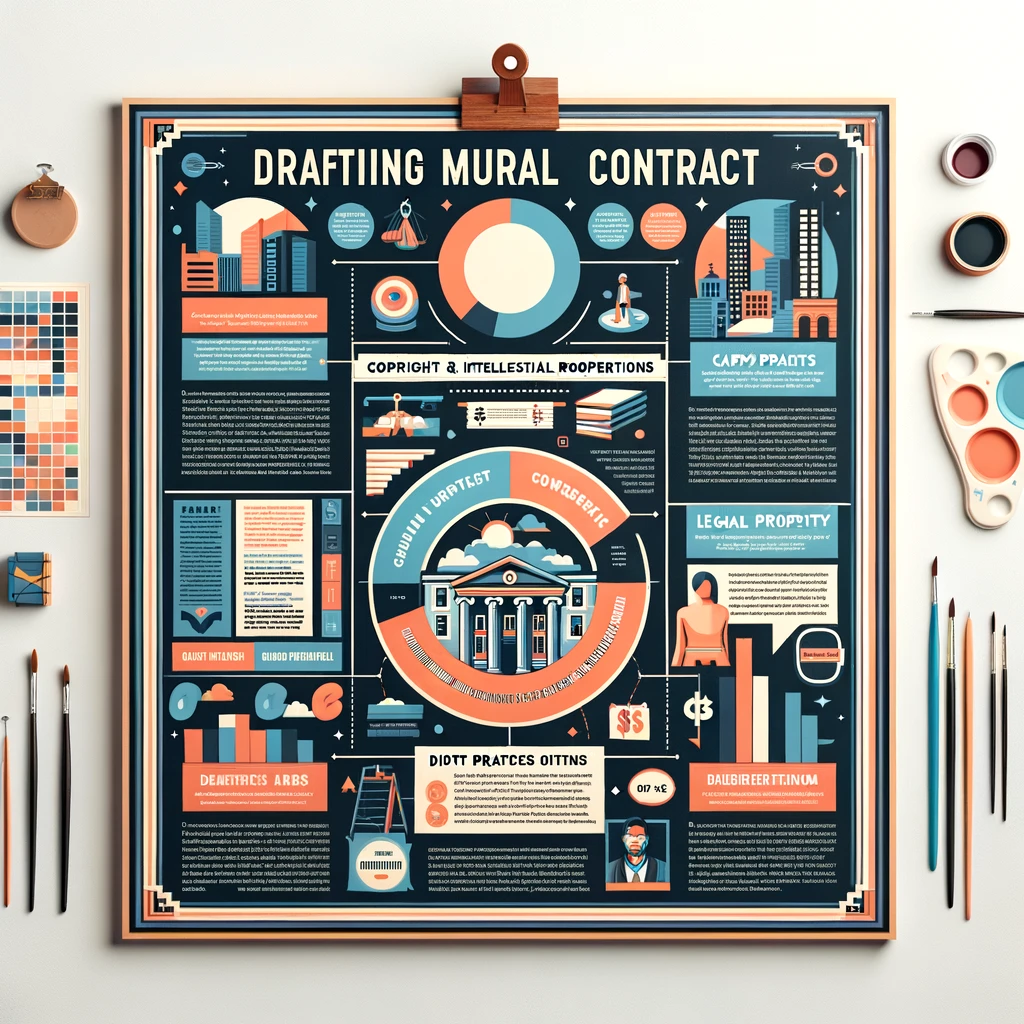The Ultimate Guide to Mural Contracts: Protecting Your Artistic Endeavors
Creating a mural is not just an act of artistic expression; it's a complex project that involves various stakeholders, including artists, property owners, and sometimes, local governments. To ensure that the interests of all parties are protected, a well-drafted mural contract is essential. This guide delves into the intricacies of mural contracts, offering insights on how to create a comprehensive agreement that safeguards your artistic endeavors.

Understanding Mural Contracts
A mural contract is a legal document that outlines the terms and conditions of the creation and display of a mural. It covers various aspects, including the scope of work, compensation, copyright ownership, maintenance, and the duration of the display. The primary goal of a mural contract is to ensure clarity and prevent disputes between the artist and the client.
Key Components of a Mural Contract
Scope of Work: Clearly defines the project's details, including size, location, design, and materials.
Compensation and Payment Terms: Outlines the payment schedule, including any deposits, progress payments, and final payment upon completion.
Copyright and Ownership: Specifies the ownership of the artwork and copyright arrangements.
Duration and Maintenance: Details the mural's expected lifespan and maintenance responsibilities.
Termination Clauses: Explains conditions under which the contract can be terminated.
For a deeper understanding of copyright laws related to murals, the Copyright Office provides comprehensive guidelines.
Legal Considerations for Mural Contracts
Copyright and Intellectual Property
Copyright plays a crucial role in protecting the rights of mural artists. Under U.S. law, the artist automatically holds copyright to their work upon creation. However, specifying copyright ownership in the contract ensures legal clarity. For more information on copyright law, visit the U.S. Copyright Office.
Moral Rights and VARA
The Visual Artists Rights Act (VARA) grants artists certain rights over their work, even after sale or commission. This includes the right to prevent distortion, mutilation, or other modifications. Artists and clients should understand VARA implications, which are detailed on the Library of Congress website.
Local Regulations and Zoning Laws
Some municipalities have specific regulations concerning murals, especially in historic districts or public spaces. Researching local zoning laws and obtaining necessary permits is crucial. Information can typically be found on local government websites or the National Conference of State Legislatures (NCSL) site.
Drafting a Mural Contract: Best Practices
1. Clear and Detailed Descriptions
Ensure that all project aspects, from design to installation, are described in detail to avoid ambiguity.
2. Fair Compensation Structure
Define a compensation structure that is fair and accounts for all materials, labor, and any unforeseen expenses.
3. Specify Copyright and Reproduction Rights
Clearly outline copyright ownership and the rights of each party regarding reproduction of the mural image.
4. Include a Maintenance and Durability Clause
Address the mural's upkeep, including who is responsible for maintenance and how damages or wear will be handled.
5. Prepare for the Unexpected
Include clauses that address potential issues such as weather delays, changes in project scope, or termination conditions.
Navigating Disputes and Termination
Even with a well-drafted contract, disputes can arise. Including dispute resolution methods within the contract, such as mediation or arbitration, can provide a pathway to resolving issues without litigation. Understanding your rights and having a clear termination process can also mitigate potential legal challenges.

Create & Review Your Contracts 10x Quality and Ease
Lawyer-level AI handles all your contract needs, with real lawyers providing safeguarding support

Conclusion
A mural contract is a critical tool for artists and clients to ensure that their interests and investments are protected. By focusing on clear communication, legal protections, and fair compensation, you can establish a solid foundation for a successful mural project. For more resources on creating legal agreements for art projects, educational institutions like Harvard University and Stanford University offer valuable insights and legal research tools.
Remember, consulting with a legal professional who understands copyright law and local regulations can provide tailored advice to meet your specific needs, ensuring that your artistic expression is protected through every brushstroke.

